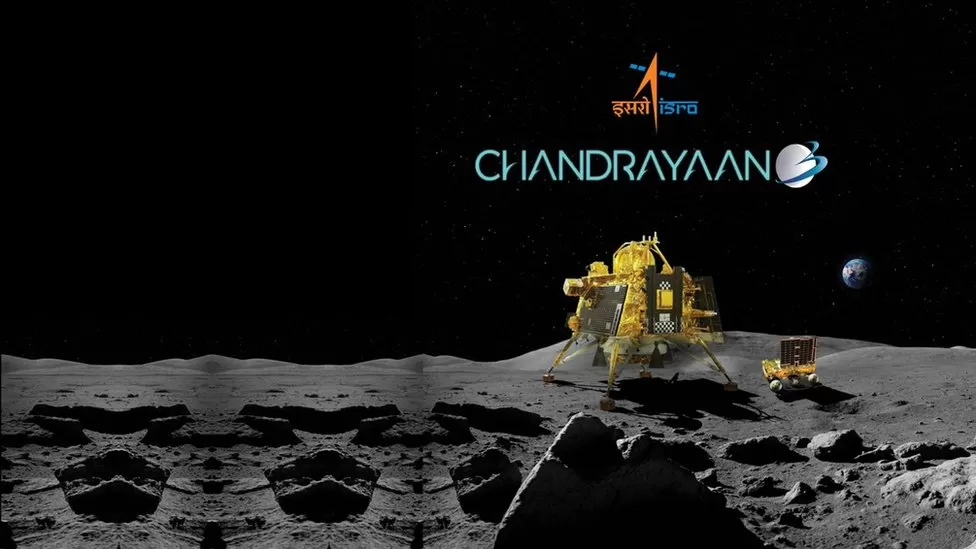india’s Moon lander aims for historic lunar south pole landing

The third lunar landing by India is set to make history on Wednesday.
India will be the first country to land near the Moon’s little-explored south pole if Chandrayaan-3 succeeds.
In the future, scientists believe human habitation on the Moon could be supported by water-based ice.
The Indian attempt comes just days after the Russian Luna-25 crashed in the same area.
It would be the fourth country to land near the equator on the Moon, following the US, the former Soviet Union, and China.
Chandrayaan-2 failed to land near the south pole in 2019 – it crashed into the lunar surface.
Chandrayaan-3 is now the focus of all eyes.
From the Sriharikota space center in south India, the spacecraft with an orbiter, lander, and rover launched on 14 July.
Pragyaan, the Sanskrit word for wisdom, is carried within the belly of the lander called Vikram after ISRO founder Vikram Sarabhai.
First photos from India’s latest Moon mission
Successful launch of India’s historic moon mission
In India, the mission’s journey to the Moon has generated much excitement, with messages of support pouring in from all over.
Millions of people, including schoolchildren, will watch a live broadcast of the landing, according to Isro.
According to ISRO chief Sreedhara Panicker Somanath, Chandrayaan-3 will land softly.
In order to fix the glitches in the Chandrayaan-2 crash, he said they studied the data carefully and carried out simulation exercises.
Vikram lander’s camera has been mapping the lunar surface extensively over the past few days in order to locate a safe landing site.
In its update on Tuesday, Isro said “The mission is on schedule, systems are being regularly checked, and things are proceeding smoothly.” Mr Somanath has said Chandrayaan-3 will build on the success of India’s earlier Moon missions and contribute to some “very substantial” scientific discoveries.
Chandrayaan-1, the country’s first Moon mission in 2008, had discovered water molecules on the parched lunar surface and confirmed that the Moon has an atmosphere during daylight hours.
A mission from India enters lunar orbit, aiming for the south pole of the moon
Vikram, India’s lunar lander, inches closer to the moon
Its orbiter continues to circle the Moon even today, helping the Vikram lander send images and data to Earth despite failing the soft landing.
There are five scientific instruments on board the lander and rover that will be used to discover “the physical characteristics of the Moon’s surface, the atmosphere close to its surface, and the tectonic activity below its surface”.
Scientists will use complex maneuvers on Wednesday to reduce the lander’s speed gradually to allow a soft landing in an area described as “very uneven, full of craters and boulders” by space scientists.
